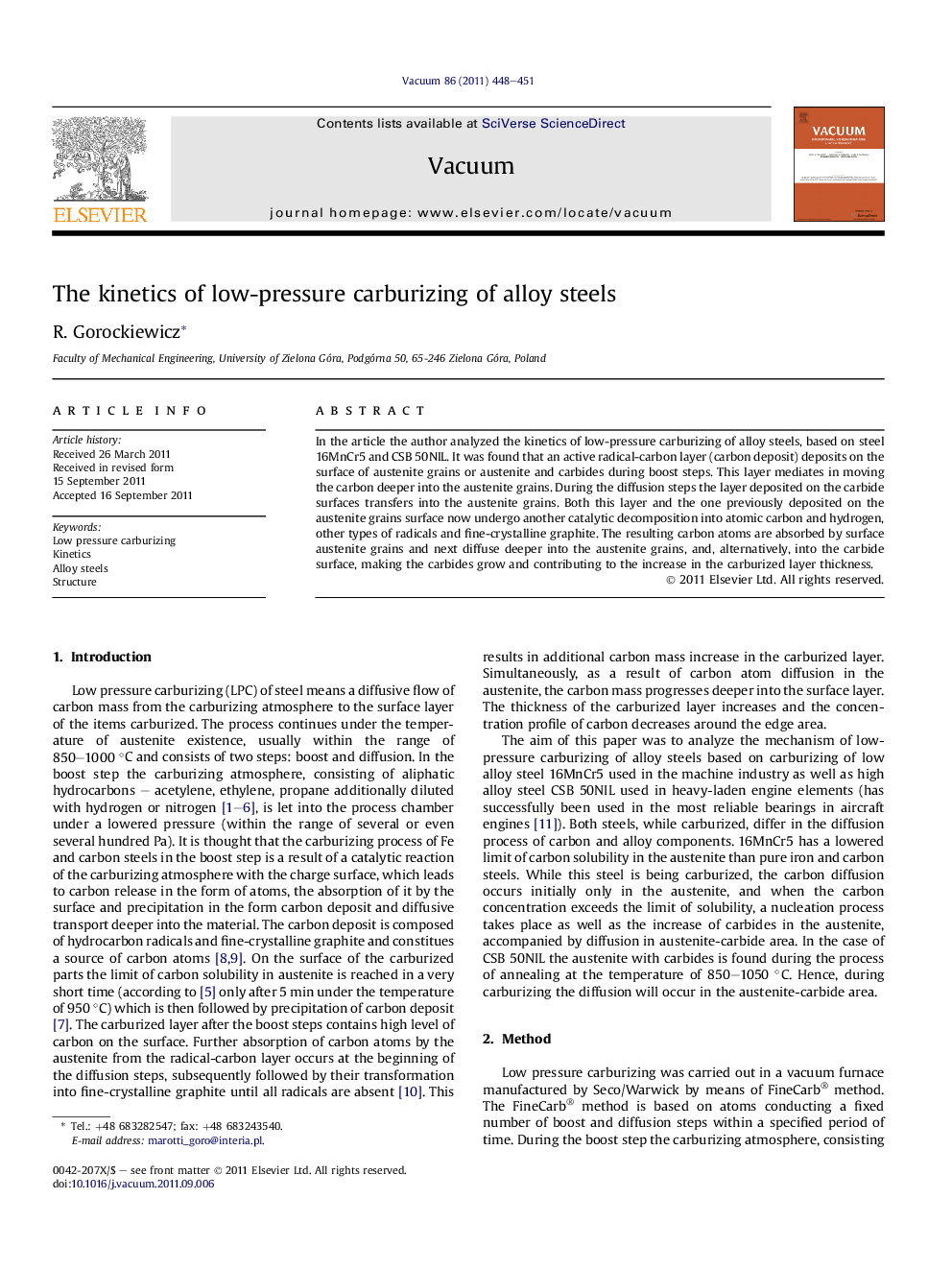| Article ID | Journal | Published Year | Pages | File Type |
|---|---|---|---|---|
| 1690821 | Vacuum | 2011 | 4 Pages |
In the article the author analyzed the kinetics of low-pressure carburizing of alloy steels, based on steel 16MnCr5 and CSB 50NIL. It was found that an active radical-carbon layer (carbon deposit) deposits on the surface of austenite grains or austenite and carbides during boost steps. This layer mediates in moving the carbon deeper into the austenite grains. During the diffusion steps the layer deposited on the carbide surfaces transfers into the austenite grains. Both this layer and the one previously deposited on the austenite grains surface now undergo another catalytic decomposition into atomic carbon and hydrogen, other types of radicals and fine-crystalline graphite. The resulting carbon atoms are absorbed by surface austenite grains and next diffuse deeper into the austenite grains, and, alternatively, into the carbide surface, making the carbides grow and contributing to the increase in the carburized layer thickness.
► LPC of alloys steels is composed of two steps: boost and diffusion. ► Boost steps- carbon deposit settles on the surfaces of the austenite and carbides. ► Diffusion steps– the deposit progresses from the carbides to the austenite. ► There it turns into atomic carbon and fine-crystalline graphite. ► This increases the carbon mass in the carburized layer.
